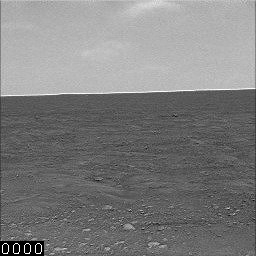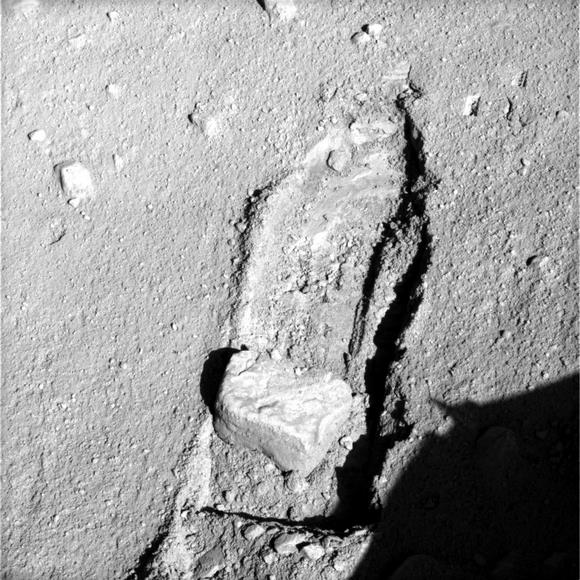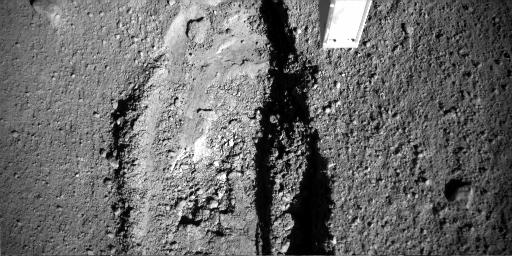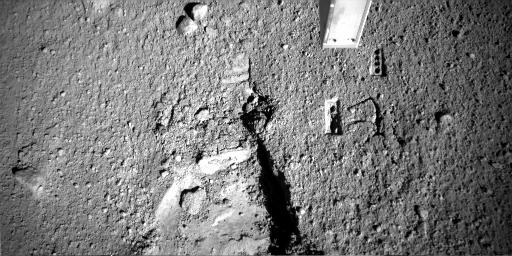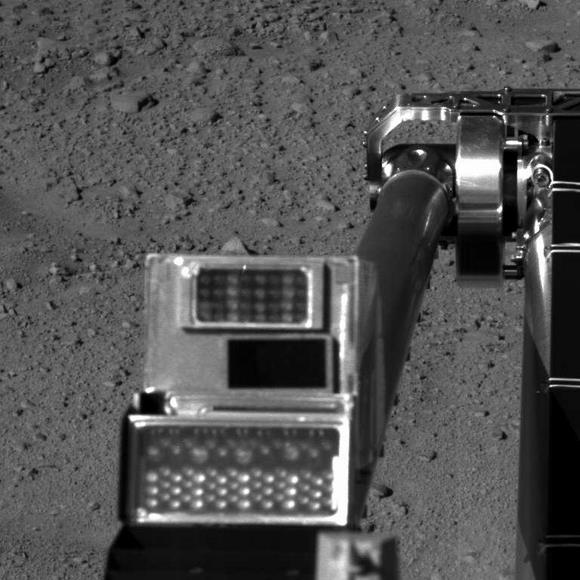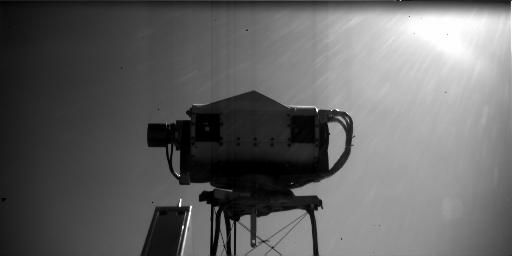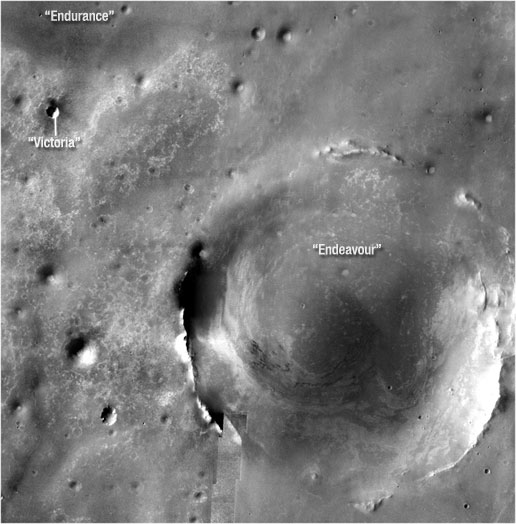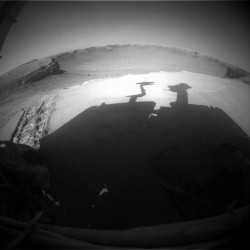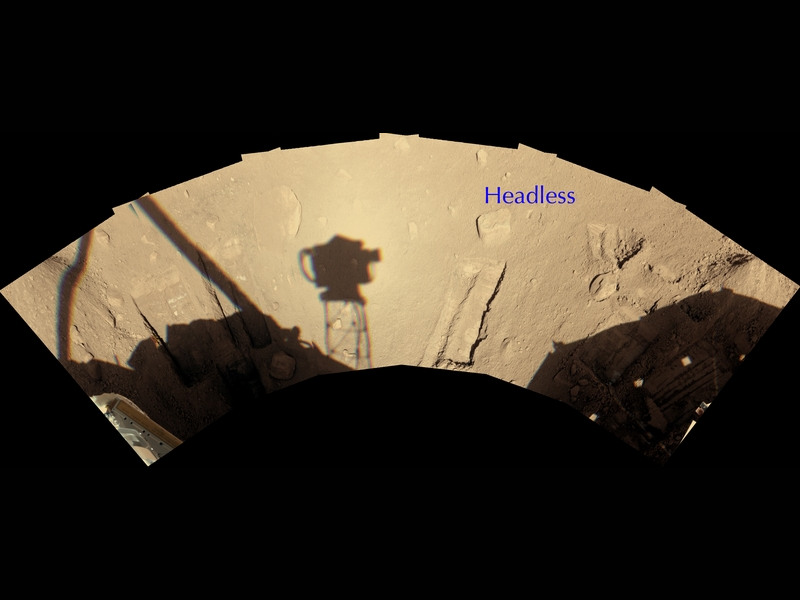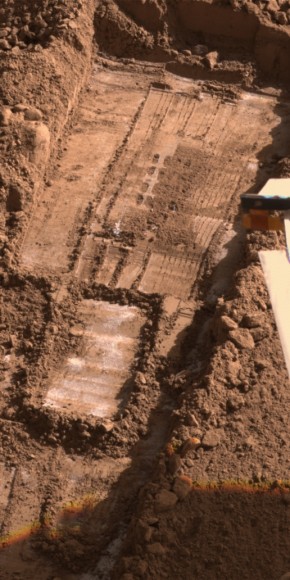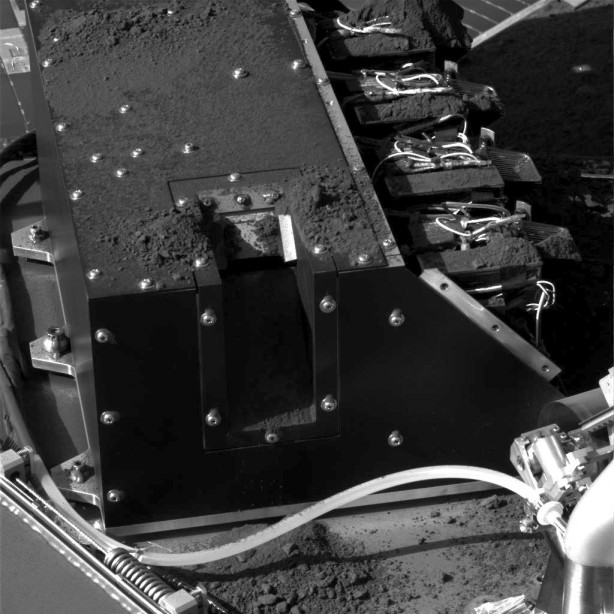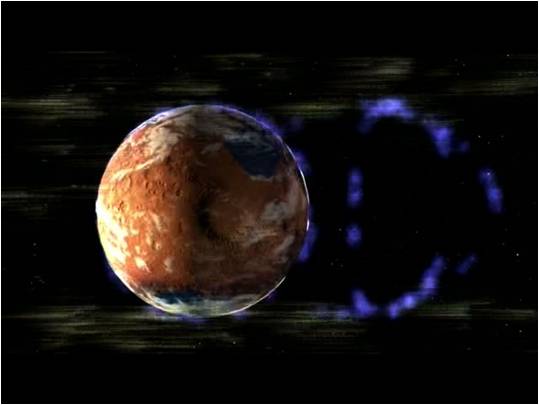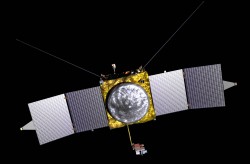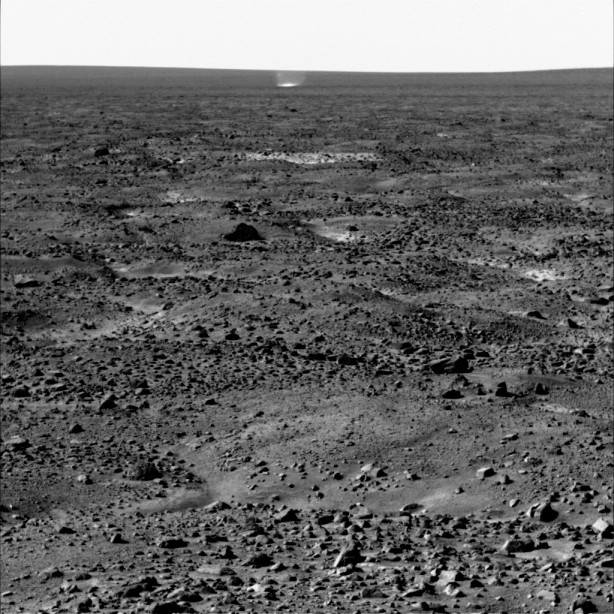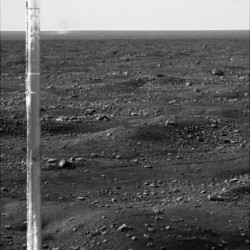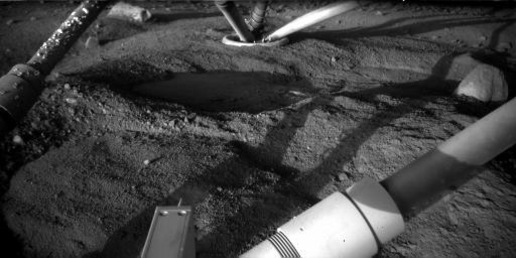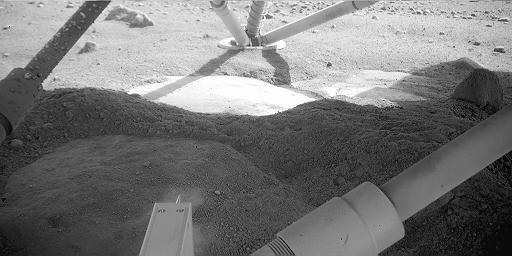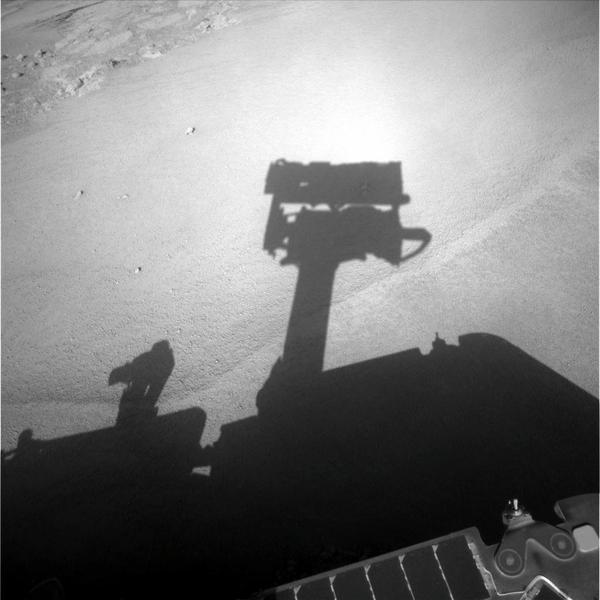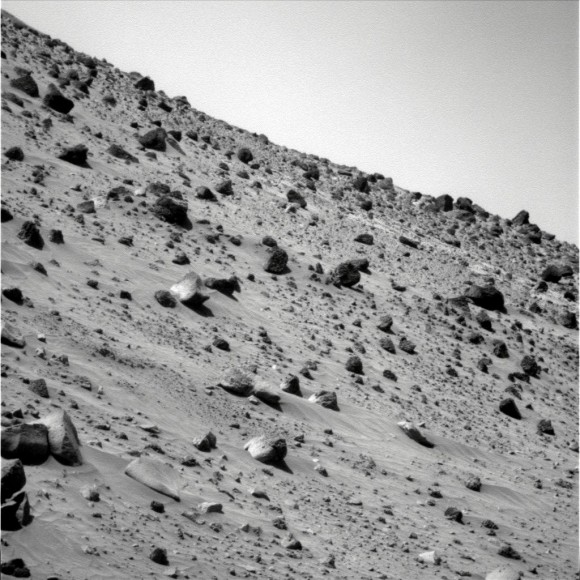[/caption]
Remember the movies of clouds floating above the Phoenix Lander? Further study with the lander’s Lidar instrument has detected snow falling from Martian clouds. “The clouds are composed of ice crystals, and some of the crystals are large enough to fall through the atmosphere,” said Jim Whiteway, lead scientist for the Meteorological Station on Phoenix. Whiteway and several researchers shared recent findings from Phoenix at a press briefing today. “So snow is falling from the clouds and we are going to be watching very closely over the next month for evidence that the snow is actually landing on the surface. This is a very important factor in the hydrological cycle on Mars, with the exchange of water between the surface and the atmosphere.”
“Nothing like this view has ever been seen on Mars,” Whiteway added.
From Phoenix images and data, scientists have observed water condensing in the atmosphere. In recent weeks, as the temperatures fall in onset of winter on Mars’ northern plains, frost, ground fog and clouds are prevalent. “This is now occurring every night,” said Whiteway. “The Lidar is able to probe the inner structure of the clouds. It emits pulses of light upward into the atmosphere and detects what is scattered back. The laser emits pulses of light 100 times per second, so if you were standing beside the lander looking upward, you’d see a continuous green beam.” Data and images of the beam show bright spots in beam is where it is reflecting off ice crystals, and also where it reflects off clouds, a few miles above the surface.
The snow starts falling from a height of 4 km and fall down to 2 km. At that point the observations stopped, as they were initially set up for a limited amount of time. Further observations will be done to see if the snow is actually falling down to the surface of the planet.
Other experiments with Martian soil have provided evidence of past interaction between minerals and liquid water. Two different instruments have detected calcium carbonate and clays. On Earth, these form only in the presence of liquid water.
How much calcium carbonate or clays are in the soil hasn’t been fully quantified yet, said Bill Boynton, lead scientist for the TEGA Instrument (Thermal and Evolved Gas Analyzer) But at least 3-6 per cent of the soil is calcium carbonate, and about 1 per cent is clay. There were suspicions of carbonates in Mars soil, and now both the TEGA and the MECA instruments have verified their presence.
Both TEGA, and the microscopy part of MECA, have also turned up hints of a clay-like substance. “We are seeing smooth-surfaced, platy particles with the atomic-force microscope, not inconsistent with the appearance of clay particles,” said Michael Hecht, MECA lead scientist at NASA’s Jet Propulsion Laboratory in Pasadena, Calif.
However, finding perchlorates in the soil leads to somewhat of a contradiction, as perchlorates would be sensitive to any water present. If large amounts of water were present in the past, the perchlorates should have dissolved. But they didn’t.
Another clue to the Mars soil puzzle is the dryness of the soil. The lander’s thermal and conductivity probe has indicated the soil is extremely dry around the lander, even though just under the surface, ice is present. “The dryness of the soil is a mystery here,” said Phoenix principal investigator Peter Smith. “We’re wondering if the perchlorate is absorbing or sucking up the water. We say dry because there aren’t any thin films of liquid water mixed with salts in the soil.” If percholate are mixed with water, brines could form, but the scientists have not seen evidence of a brine or remnants of a brine with cameras on board Phoenix. Perchlorates, however, are useful to microbes, which can use it as an energy source. “It’s an Interesting material to find on Mars, and there will be more research coming to find out what it might mean on Mars,” said Smith.
Another finding discussed was the pH levels of the soil. Hecht said the pH of the soil has been determined to be 8.3, which is lower than initially thought. Hecht said this is almost exactly the pH of ocean water on Earth, and the calcium carbonate may be responsible for this level of pH.
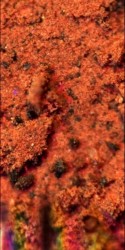
Hecht also discussed the unique images from the microscopes on board Phoenix. The first image, shows the soil is mostly composed of fine orange particles, and also contains larger grains, about a tenth of a millimeter in diameter, and of various colors. The soil is sticky, keeping together as a slab of material on the supporting substrate even when the substrate is tilted to the vertical.
The fine orange grains are at or below the resolution of the Optical Microscope. Mixed into the soil is a small amount – about 0.5 percent – of white grains, possibly of a salt. The larger grains range from black to almost transparent in appearance. At the bottom of the image, the shadows of the Atomic Force Microscope (AFM) beams are visible. This image is 1 millimeter x 2 millimeters.
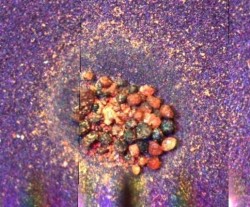
The second image shows a cluster of colored particles. “The reason they are all clustered like that is because they are strongly magnetic,” said Hecht. “All the fine red stuff has fallen off leaving all these little “Easter eggs” of all different colors and shapes. The particles are rounded because they’ve been tumbled by the wind across the sand and they’ve been polished. You also see a lot of angular particles that are clear, that are very white as if they are salts. So we can start to see the different animals in the zoo of Martian mineralogy.” Phoenix’s atomoic force microscope will be used in the coming weeks, and Hecht said the team should be able to provide a catalog of different particles found in these images.
Source: Phoenix new conference, press release

